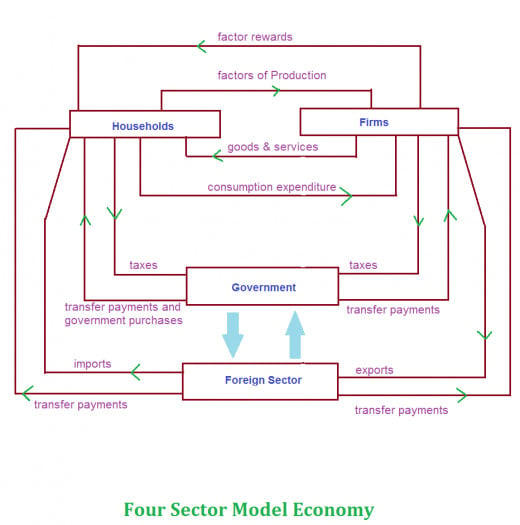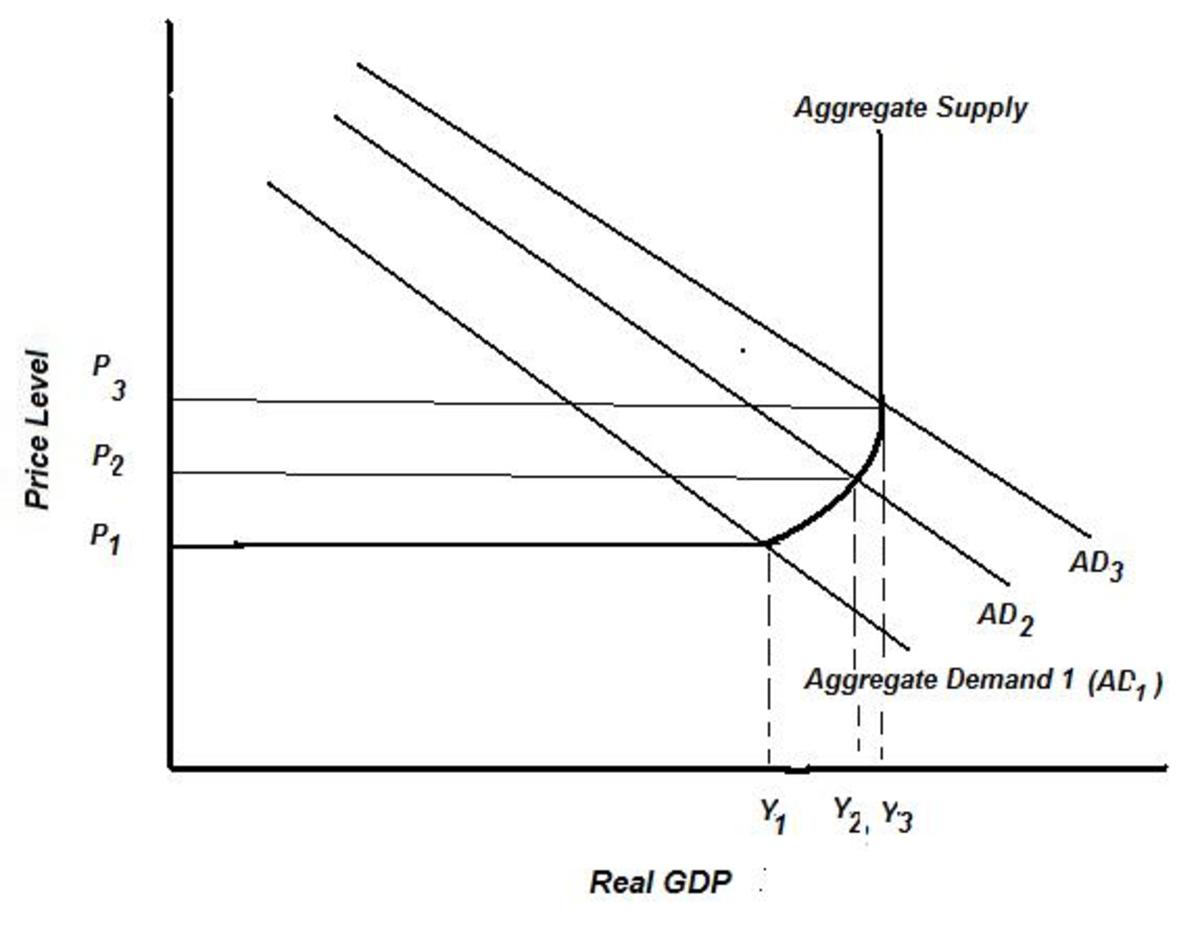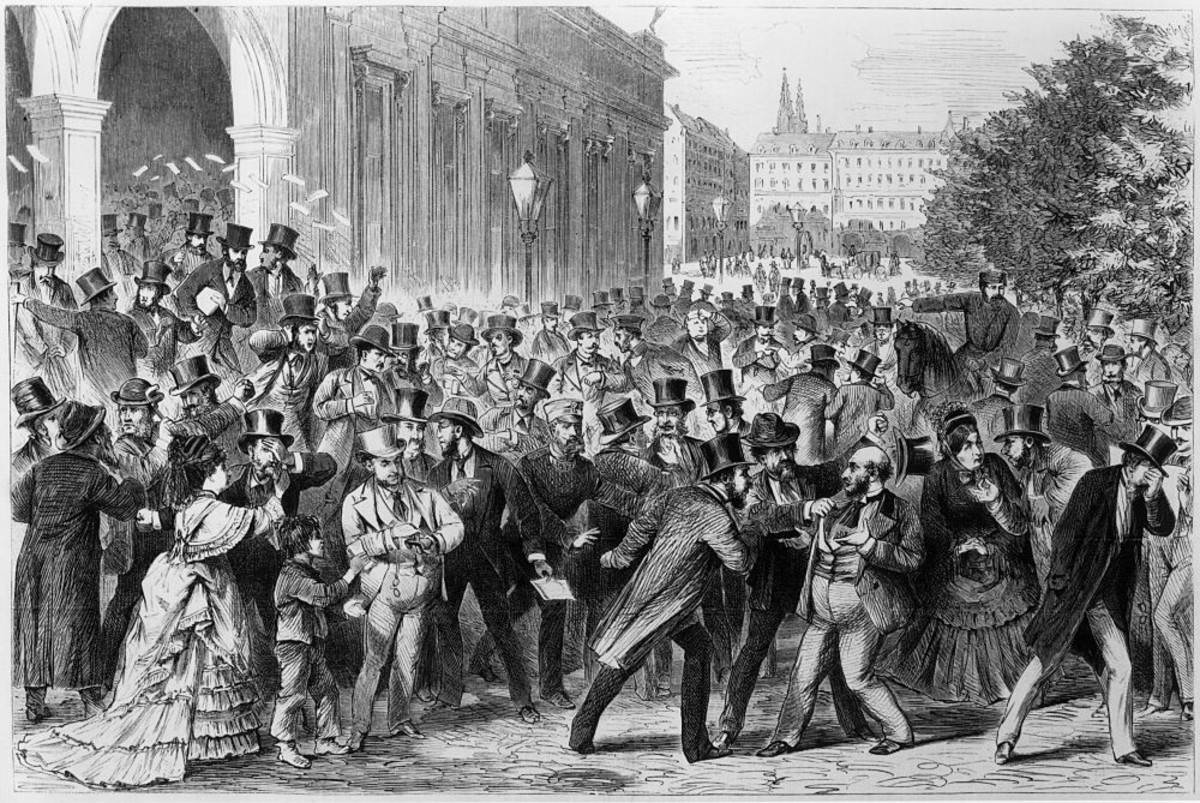Circular Flow of Economic Activity (Four Sector Model)


Introduction
To analyze an economy as a whole, economists have developed different models. The significance of these economic models enable us to understand the economic activities more vividly. For this purpose an economy can be classified in to four major sectors. Which includes households, firms, government and foreign sector or external sector. Formerly, there was a simple model which constitute two sectors like households and firms. Its working can be understand with the help of circular flow of economic activity of two sector model. This was popular in the early developing stages of economics. They neglected the role of government sector. Gradually the role of government considered as an important one and the sector also included to this model. This is popularly known as the three sector model economic activity. But now the four sector model became more important, because almost all the countries are opened and they are actively participating in foreign trade (export and import). So, the four sector model representing an open economy. Here this hub very briefly explained about the interactions between these four sectors and their functioning.
Four Sectors of an Economy
As mentioned above, there are four integral parts or sectors consisting in a four sector model economy. They are household sector, firms, government and foreign sector. Each of them are briefly explained below.
Household sector: It consist of peoples or individuals. Household sector provides factors for production in the form of labor, land, building, capital etc. Consumers are also come under household sector.
Firms: It refers to the various industries and producing goods and services to satisfy the demand of households. Firms are hiring the factor services supplied by households and pays them rewards in various forms like wages for labor, rent for land and building etc.
Government: It is an important part of any economy, particularly in recent days. The main function of government sector are policy making, implementation of policies, law and order matters etc. The government may design fiscal policy or monetary policy. They adjust policy instruments to stabilize the economy. The instruments may in the form of tax, subsidies, factor payments etc.
Foreign sector: Foreign sector is an integral one for any open economy. Since the international trade become more active, every country consider it as a vital one for making policies, improving national growth etc. In an open economy, factor rewards are flowing in to the economy and also outside the economy. Whatever, the flow of transactions will come under the foreign sector or external sector. It includes imports, exports, granting loans between countries, payments for renting services like shipping, air services etc.
The Four Sector Model
The economic activities or interactions between these four sectors of an economy can be explained with the help of a figure as showing below.

Based on the above figure, now the time to understand the functioning of each economic agents or sectors.
Household Sector
Basically household sector provides its factors of productions like land, labor, capital and organizer to the firms. And they will be rewarded by firms in different kinds. That is, a labor may earn wage, capital may earn interest, organizer may earn profit and land may give earn rent. After making products or output, firms will supply it and the individuals may demand it and they will pay their consumption expenditure. Here the factors of production are supplying through factor market and goods and services (output) are supplying through goods market.
Similarly, households interact with government sector in two ways. Firstly, for the payment of taxes, which may be direct or indirect taxes. Of course the government also spend money in the economy for household sector in the forms like pensions, scholarships etc.
Household sector interact with foreign sector in two ways. Household sector receive transfer payments from abroad for providing their services in abroad. The services of non-residents in abroad is come under here. When the economy import something households may spend their income on imported goods. So, import is considered as a leakage from the economy, while the remittances from non residents is a gain.
Firms
Firms are producing the goods and services. For this, firms are hiring factor services supplied by the household sector. After the production process, they will sell the output through the goods market or commodity market. So, the firm sector will receive consumption expenditure spent by the household sector.
Firms are actively interact with the government. Basically for tax payment. So that the government can earn more tax revenue. Sometimes government may provide subsidies for business firms by aiming different purposes. So, subsidies are the expenses of government sector and a stimulants for the business firms.
Business firms are very actively interact in foreign sector. The income of a firm increases when they export goods and services to abroad. On the other hand when they demand capital goods, machines, raw materials etc, it will consider as an expenditure of the firms.
Government Sector
Government sector interact with household sector by providing transfer payments in the form of pensions, bonuses, scholarships etc. Similarly government earn both direct and indirect taxes from household sector.
Government sector also earn taxes from firms from their business profits. Above all government may intervene for assisting and controlling the business sector by granting subsidies, price ceiling etc.
Today, every government has a touch with foreigners. They also assisting rest of the world by providing loans, technical assistance etc. So, there will be the inflow or outflow of income and output.
Foreign Sector
Foreign sector plays a vital role in an open economy. When household sector demands more, the import will increase and lead to a deficit foreign trade account balance. On the other hand, through the foreign sector, individuals may make remittance for their services provided by in abroad.
When there is exports from the country, it will be an injection to the economy since it earn gain for the economy. Similarly the inflow of money can be increased by earning rewards on the services provided by firms in the form of air services, software etc. Money spend by the foreign tourists is also an earning.
There will be inflow and outflow of money when there is trade, it may in the form of duties on imports and exports, tariffs etc.
Conclusion
In short, four sector model economy is an open economic model. Which showing a simple picture of the economy and economic activities. In a four sector model economy, all the sectors are interacting with each other in many ways.









